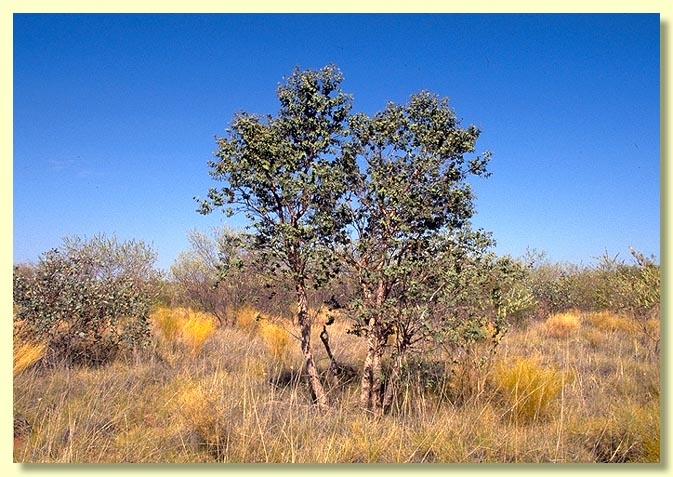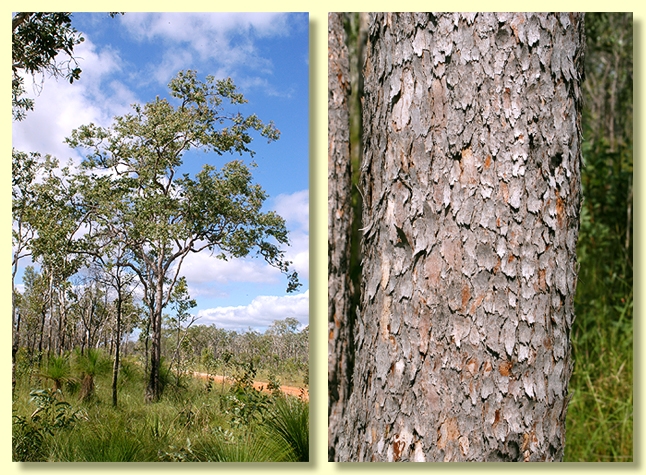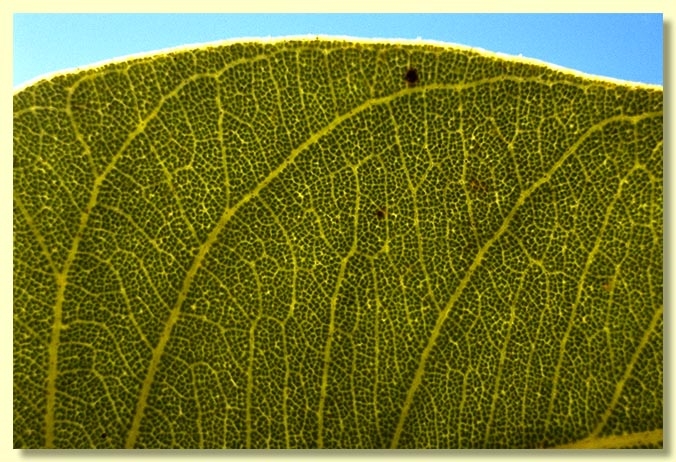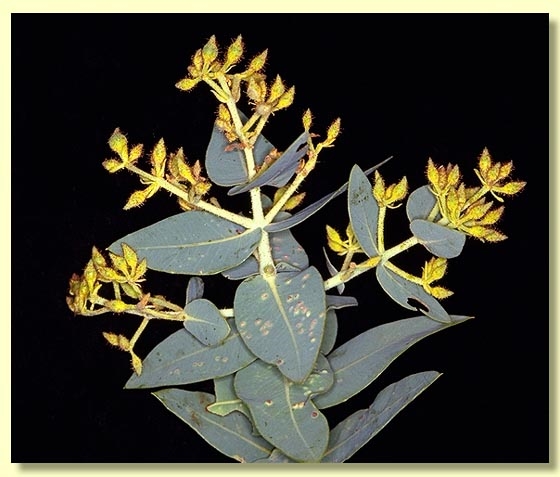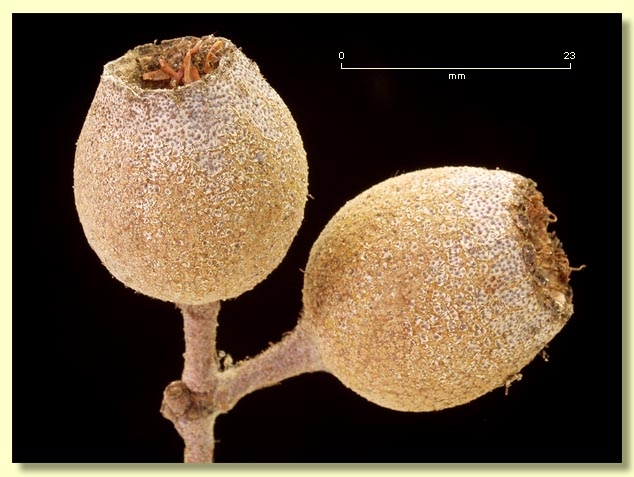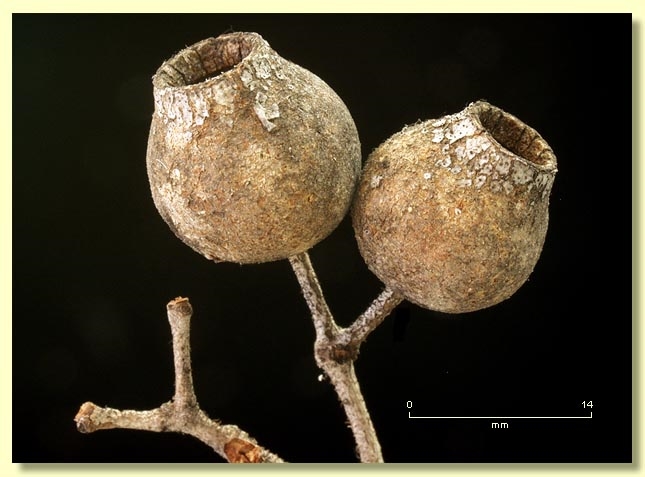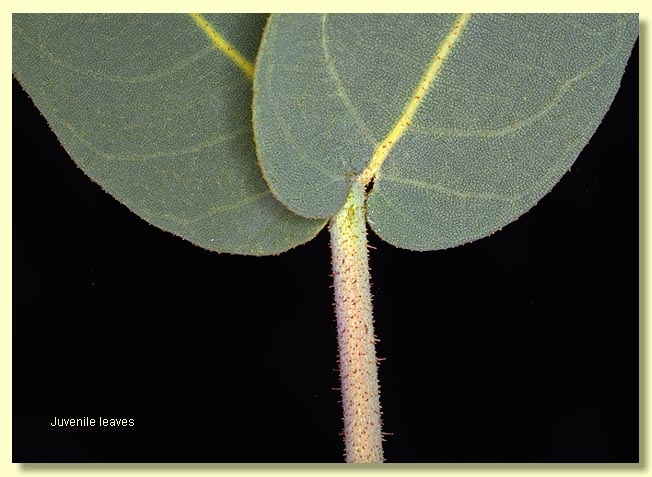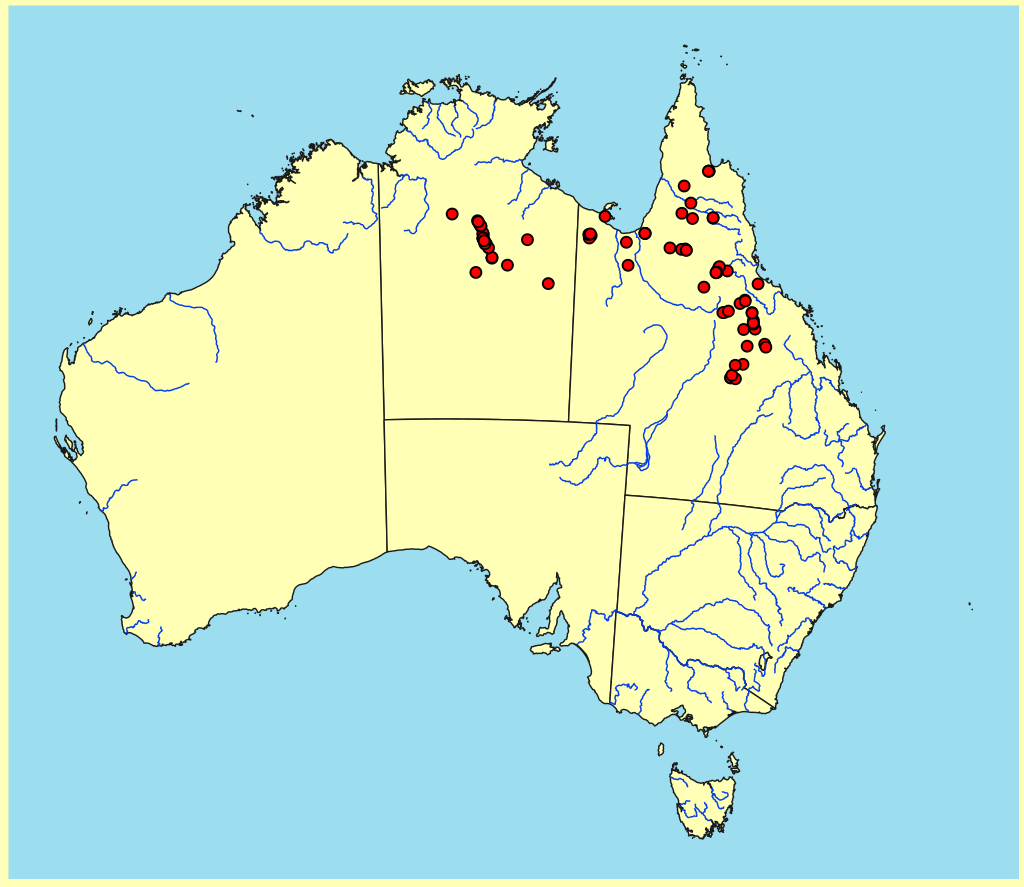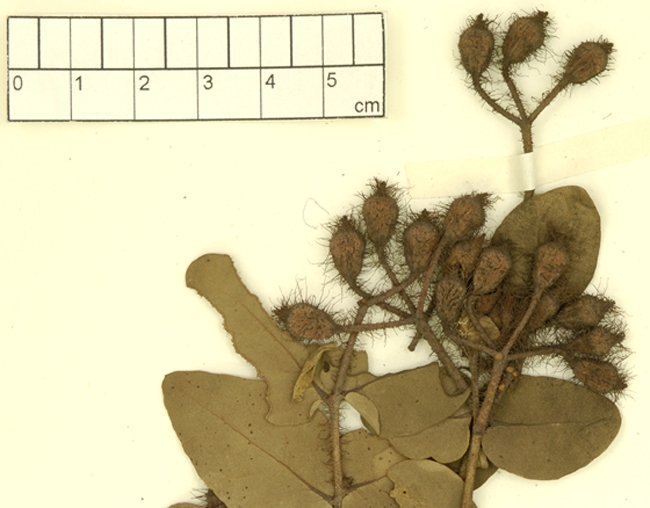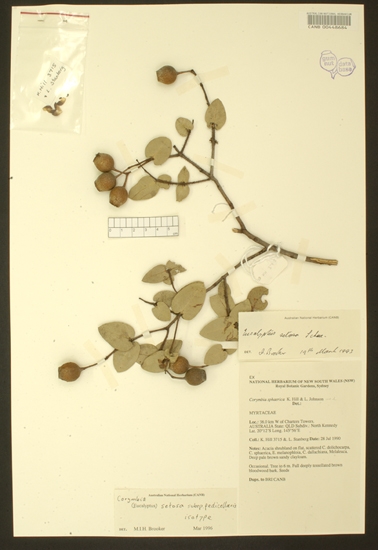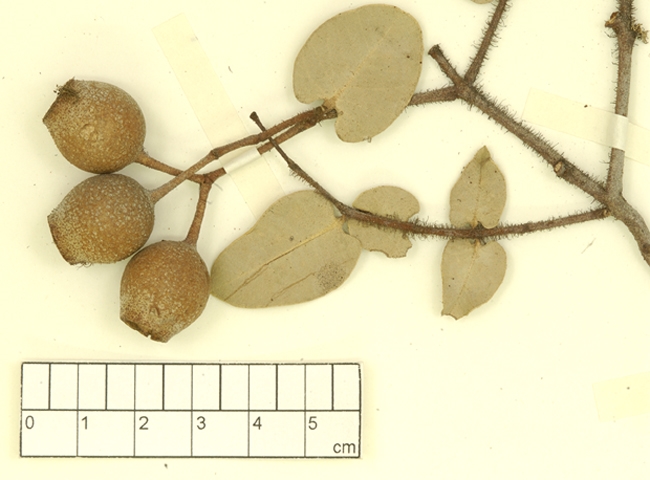Euclid - Online edition
Corymbia setosa
Corymbia | Rufaria
Corymbia setosa (Schauer) K.D.Hill & L.A.S.Johnson, Telopea 6: 356 (1995).
Tree to 4 m or rarely a thick-trunked mallee. Forming a lignotuber.
Bark rough to the small branches, deeply tessellated, brown to yellow brown.
Branchlets lack oil glands in the pith; younger branchlets conspicuously setose with bristle-glands; branchlets occasionally whitish.
Juvenile growth (coppice or field seedlings to 50 cm): stems rounded in cross-section, setose; juvenile leaves opposite and sessile, cordate, 3.8–7.8 cm long, 1.7–3.3 cm wide, stem-clasping or lobed, green, scabrid.
Crown of juvenile leaves, opposite, sessile or very shortly petiolate (to only 0.2 cm long); blade cordate or rarely almost elliptical-oblong, (1.5)2.7–7.7 cm long, 1–5 cm wide, base amplexicaul, margin entire, apex pointed or rounded and apiculate, concolorous, dull, light green to grey-green or yellow-green, smooth or slightly scabrid with the remains of short bristle-glands, side-veins at a wide angle to the midrib (penniveined), reticulation very dense, intramarginal vein present, oil glands apparently absent.
Inflorescence terminal compound, peduncles rounded or angled, 0.3–2.5 cm long, buds 3 or 7 per umbel, pedicels 0.3–1(1.5) cm long. Mature buds pyriform, 0.6–1.2 cm long, 0.5–0.7 cm long, conspicuously setose with long and short bristle-glands, scar absent (both opercula shed together at flowering), operculum beaked or, rarely, rounded, stamens inflexed, all fertile, anthers versatile, dorsifixed, oblong, dehiscing by longitudinal slits, style long and straight, stigma blunt with a fringe of papillae, locules 4, vertical ovule rows indistinct on the placentae. Flowers white.
Fruit pedicellate (pedicels 0.1–1.2 cm long), urceolate to truncate-globose, often with a neck but the neck not flared outwards, 1.1–2.8 cm long, 1.1–2.5 cm wide, surface rough, disc descending vertically, valves 4, enclosed.
Seeds brown, 8–13 mm long, ellipsoidal with terminal wing, hilum ventral.
Cultivated seedlings (measured at ca node 10): cotyledons large, reniform; stems rounded in cross-section, setose with bristle-glands of variable length; leaves sessile or shortly petiolate (petioles to 0.2 cm), opposite, cordate to ovate, 3.8–6.1 cm long, 1.7–3.3 cm wide, base amplexicaul to rounded, apex pointed to rounded, scarcely discolorous, dull, mid-green, shortly setose with bristle-glands that may bear simple hairs or papillae, or lack these.
Flowering has been recorded in June.
A small tree or thick-trunked mallee found from the Tennant Creek, Daly Waters and Barkly Tableland in the Northern Territory east into Queensland through the Gulf of Carpentaria hinterland and islands, to the Musgrave area of Cape York Peninsula, and south to Barcaldine, usually on red sands or stony rises. Corymbia setosa is rough-barked and has an opposite-leaved crown of smooth to scabrid cordate leaves, conspicuously setose buds and rough-surfaced fruit.
C. setosa is one of a group of northern bloodwoods with rough bark and opposite leaves. It is a bit difficult to distinguish from C. deserticola subsp. mesogeotica unless buds are present. The buds of the latter are sparsely papillose (warty) or smooth and the fruit are usually smaller (0.8–1.6 cm wide) but with some overlap in dimensions. The geographic range of C. deserticola subsp. mesogeotica abuts that of C. setosa in the Tennant Creek area. Another opposite-leaved species, C sphaerica, occurs just west of the distribution of C. setosa in the Tanami Desert and Barrow Creek area, and differs from C. setosa in having sparsely setose to smooth buds which are not beaked, larger ± spherical fruit and glabrous (smooth) leaves in the crown. Other species in this opposite-leaved group of bloodwoods occur either further west in more arid areas or further north in seasonally more humid monsoonal areas.
Hill & Johnson (1995) divided Corymbia setosa into two subspecies, viz. subsp. setosa and subsp. pedicellaris, separated on bud pedicel length and the degree of development of petioles on juvenile leaves.The two isotypes of Eucalyptus setosa Schauer held in the Australian National Herbarium (CANB) have bud pedicels that match those quoted for C. setosa subsp. pedicellaris, i.e. are consistently longer than 0.7 cm, the figure quoted by the authors (ibid., p. 358). Hill & Johnson's assertion that C. setosa subsp. setosa has pedicels 0.3-0.7 cm long is thus incorrect. Hence subsp. pedicellaris is here placed in synonymy. It must be said however that trees in the eastern part of the range of Corymbia setosa (in the broad sense) do often have smaller fruit and more graceful slender pedicels.
MORE ABOUT CORYMBIA
MORE ABOUT RED BLOODWOODS
Corymbia setosa: Latin seta, a bristle.

